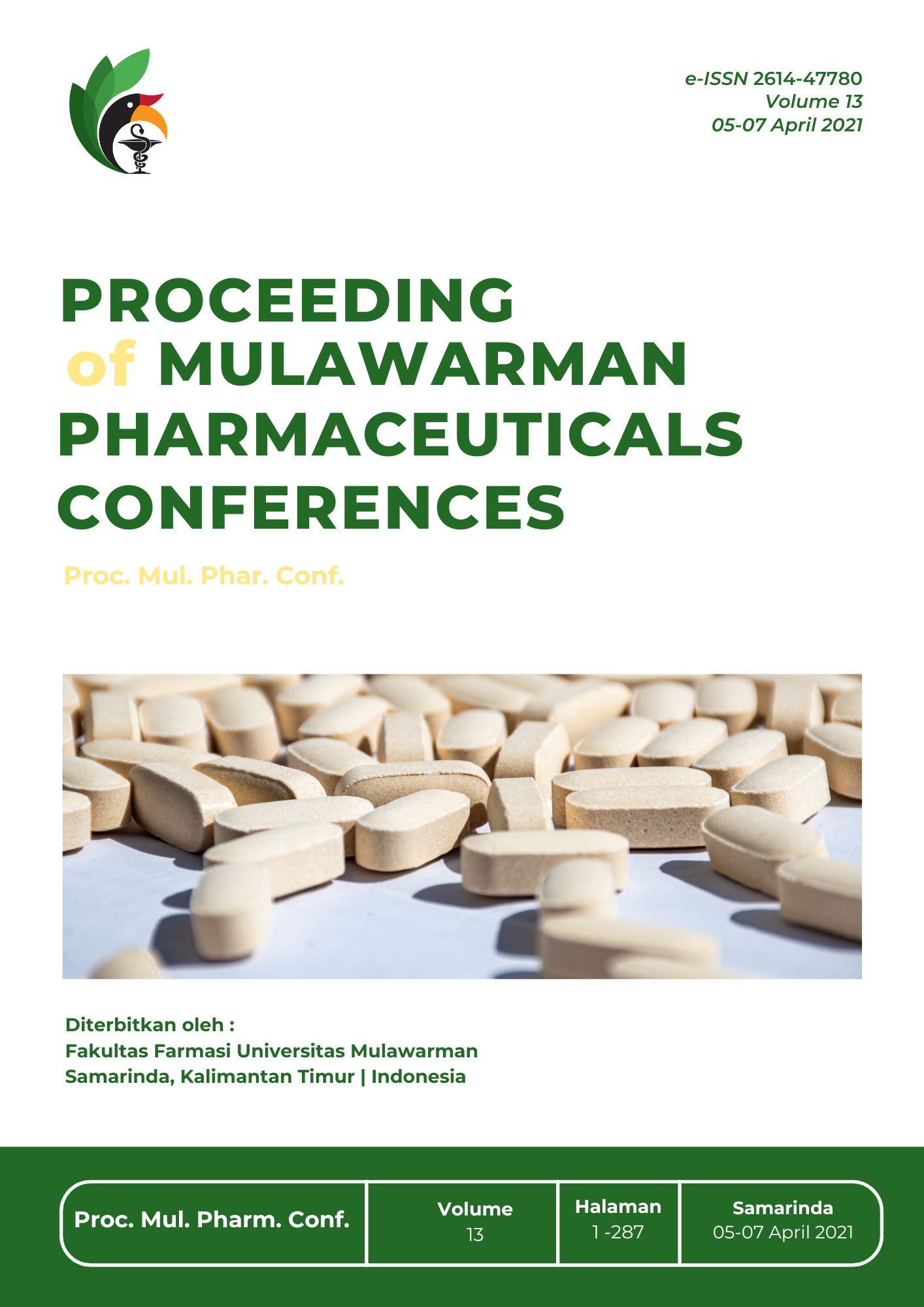Formulation of Physical Quality Test For Moringa Leaf Extract Solid Soap (Moringa oleifera L.)
DOI:
https://doi.org/10.30872/mpc.v13i.265Keywords:
solid soap, Moringa oleifera, physical qualityAbstract
The leaves of Moringa (Moringa oleifera L.) have the potential as a medicinal plant which can often be used as an alternative for the treatment of various diseases. Besides being able to be processed for food ingredients, Moringa leaves can also be used as an anti-cancer treatment, prevent anemia and can also inhibit the activity of bacteria and fungi. This study aims to produce solid soap for Moringa leaf extract and to test the physical quality according to the Indonesian National Standard (SNI). This research method is experimental which consists of the manufacture of simplicia and extraction using the maceration method with 70% ethanol solvent. formulation using Moringa leaf extract with a concentration of 0% (base), 3% (F1), and 5% (F2). Evaluation of the physical characteristics of solid soap includes organoleptic observation, homogeneity testing, pH test, foam power test. The preparation was evaluated for 4 weeks, the data were analyzed descriptively. The results of this study indicate that a solid soap preparation that is homogeneous, has a dense and smooth texture, has a fragrant aroma, base (white color), F1 (blackish green color), F2 (blackish green color). The average pH value on the basis, F1, F2 is 9.The organoleptic test results on base solid soap preparations, F1, F2 did not change from week 1 to 4. Base solid soap foam power test values, F1, F2 remain stable. The conclusion of this research is that the physical quality of the Moringa leaf extract solid soap meets the SNI requirements.
References
[1] Badan Standarisasi Nasional., 1994. Standar Mutu Sabun Mandi. SNI 06-3532-1994. Dewan Standarisasi Nasional. Jakarta.
[2] Depkes, R.I., 1979. Farmakope Indonesia Edisi Ketiga, Departemen Kesehatan Republik Indonesia. Jakarta
[3] Khaidir, Y. 2010. Pengobatan Alternatif dengan Aneka Tanaman Obat.Anwar. 2007. Moringa oleifera : A Food Plant with Multiple Medical Uses.
[4] Maulana A, Susilo. H, dan Rustiani.E. 2013, Pembuatan Sabun Transparan Aromaterapi Minyak Atsiri Akar Wangi (Chrysopogon zizanioides (L.)Roberty, Jurnal, Program Studi Farmasi, FMIPA, Universitas Pakuan,Bogor.
[5] Suryana. 2013. Kewirausahaan Kiat dan Proses Menuju Sukses. Salemba Empat: Jakarta
Downloads
Published
Issue
Section
License
Copyright (c) 2021 Angelica Olsa Okta Rizky, Elly Purwati, Cikra Ikhda Nur Hamida Safitri (Author)

This work is licensed under a Creative Commons Attribution-NonCommercial 4.0 International License.


